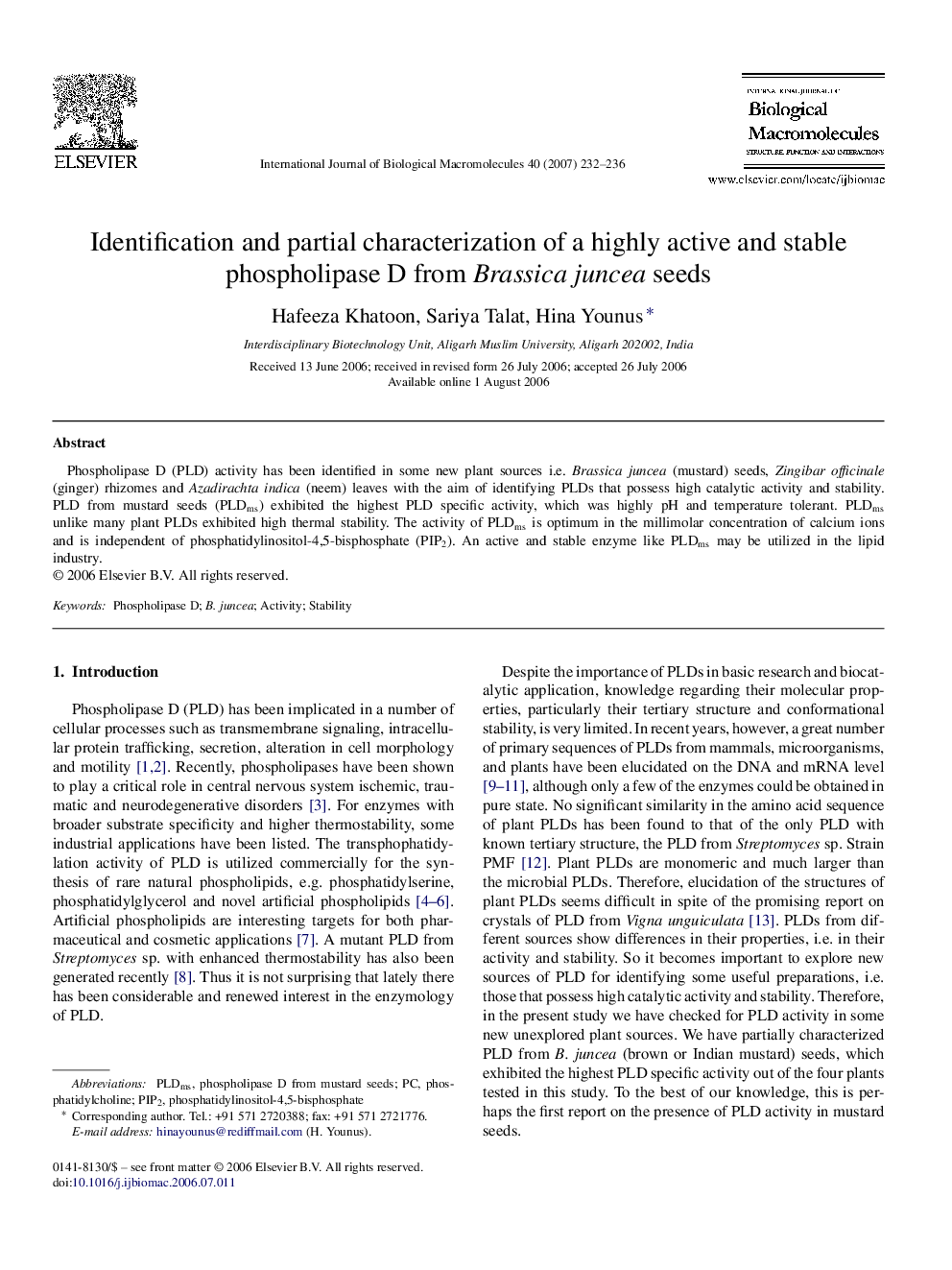| Article ID | Journal | Published Year | Pages | File Type |
|---|---|---|---|---|
| 1988294 | International Journal of Biological Macromolecules | 2007 | 5 Pages |
Abstract
Phospholipase D (PLD) activity has been identified in some new plant sources i.e. Brassica juncea (mustard) seeds, Zingibar officinale (ginger) rhizomes and Azadirachta indica (neem) leaves with the aim of identifying PLDs that possess high catalytic activity and stability. PLD from mustard seeds (PLDms) exhibited the highest PLD specific activity, which was highly pH and temperature tolerant. PLDms unlike many plant PLDs exhibited high thermal stability. The activity of PLDms is optimum in the millimolar concentration of calcium ions and is independent of phosphatidylinositol-4,5-bisphosphate (PIP2). An active and stable enzyme like PLDms may be utilized in the lipid industry.
Related Topics
Life Sciences
Biochemistry, Genetics and Molecular Biology
Biochemistry
Authors
Hafeeza Khatoon, Sariya Talat, Hina Younus,
